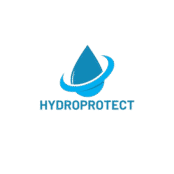Understanding the Art of Seamless Roof Protection with Hotmelt Waterproofing
In the world of roofing, especially for industrial spaces like halls and warehouses, durability and seamlessness are paramount. Hotmelt roof waterproofing has emerged as a superior solution, renowned for its longevity and flawless integration. This guide aims to shed light on why adopting hotmelt technology for roof waterproofing can be a game-changer for your property. We’ll explore its benefits, installation process, and how it compares to traditional methods of roof insulation.
What is Hotmelt Roof Waterproofing?
Hotmelt roof waterproofing is an innovative insulation technique that utilizes a 100% solid, fully bonded waterproofing layer. This system is typically applied as a hot liquid directly onto a prepared roofing structure, where it cools to form a robust, seamless membrane. This continuity eliminates weak points commonly found in overlapping or mechanically fastened systems.
The Components of Hotmelt Systems
- Primer: Ensures the clean adhesion of the hotmelt to the substrate.
- Hotmelt Membrane: A flexible and seamless waterproof layer that adapts to the surface contours.
- Protection Layer: Shields the hotmelt membrane, enhancing its durability.
- Optional Insulation: Provides thermal efficiency depending on the project requirements.
Why Choose Hotmelt Over Other Roofing Solutions?
The choice of roofing system significantly impacts maintenance costs and the building’s overall structural integrity. Hotmelt stands out due to its unique characteristics:
- Seamless Application: Unlike traditional felts and membranes, hotmelt provides a continuous layer with no laps or joints, minimizing leakage risks.
- Durability: Offers a long lifespan with minimal degradation, resisting both thermal cycling and UV exposure.
- Low Maintenance: The robustness of the system reduces the need for frequent repairs, ensuring cost-effectiveness.
- Versatile Application: Suitable for both new builds and refurbishment projects, accommodating a variety of architectural designs.
The Hotmelt Installation Process
Surface Preparation
Successful hotmelt application begins with meticulous surface preparation. The substrate must be clean, dry, and properly primed to ensure optimal adhesion of the hotmelt membrane. This step is crucial to prevent any future bonding issues that may compromise the waterproofing integrity.
Applying the Hotmelt Membrane
The application involves heating the hotmelt material to a liquid state before pouring it onto the prepared substrate. This liquid state allows for seamless coverage, penetrating any surface irregularities and ensuring consistent thickness across the roofing area.
Quality Assurance and Testing
Post-application, the system undergoes rigorous testing to verify its waterproof integrity. This includes pond testing, ensuring that the membrane can withstand standing water without compromising the building envelope.
Comparing Hotmelt with Traditional Methods
Conventional Felt Systems
Traditional felt systems, while popular, often suffer from joints and seams, which can become potential weak points over time. They also generally have shorter lifespans and require more frequent maintenance compared to hotmelt systems.
Sheet Membranes
Sheet membranes provide a pre-manufactured waterproof barrier but are prone to punctures and installation errors at seams and overlaps, areas where leaks are common. In contrast, hotmelt’s seamless application ensures uniform protection.
Hotmelt for Environment-Friendly and Cost-Effective Roofing
Another compelling advantage of hotmelt systems is their environmental sustainability. The use of 100% solids in formulation results in no volatile organic compound (VOC) emissions during application. Additionally, the installation generates minimal waste, contributing to eco-friendly construction practices.
Long-term Financial Benefits
While initial installation costs might be higher than some traditional methods, hotmelt systems pay off in the long term through reduced maintenance costs and extended lifespan. Property managers and developers can take advantage of these systems to maximize their investment returns.
Contributing to Sustainable Construction
Hotmelt systems align with modern construction demands for sustainable and energy-efficient solutions. Their potential integration with green roofs and other eco-friendly building designs highlights their versatility and adaptability to future trends.
Summary
Hotmelt roof waterproofing presents a robust, seamless, and long-lasting solution for halls, warehouses, and various industrial structures. Its advantages over traditional roofing methods include superior durability, minimal maintenance, and environmental benefits. By investing in hotmelt technology, property managers and developers can ensure a reliable and cost-effective roofing system that meets both present and future building needs. This innovative system not only addresses the challenges of weather resistance and longevity but also contributes positively to sustainable construction practices.

